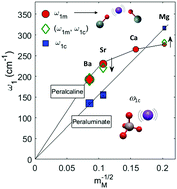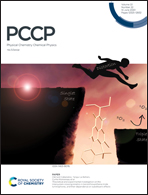Non network-former cations in oxide glasses spotted by Raman scattering†
Abstract
The depolarized Raman spectra can be used as a probe to reveal the presence of non-network formers in oxide glasses. Two spectral responses involving the cations are observed below 400 cm−1 in more than 30 compositions of binary and ternary aluminosilicates. One of the two bands arises solely from cations close to non-bridging oxygen providing thereby a simple test for qualifying the polymerization state of the glass. The second feature involves all cations whatever their role in the glass and is found to be twofold: one contribution arises from cations charge compensating (AlO4)− tetrahedra and the other one from network modifier cations. These results confirm the net vibrational contrast of cations depending on their structural surrounding.



 Please wait while we load your content...
Please wait while we load your content...